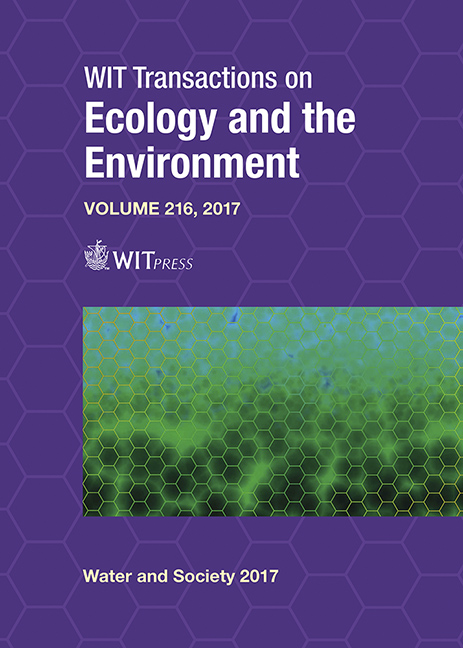OPTIMAL DESIGN OF IN-SITU PERMEABLE REACTIVE BARRIER
Price
Free (open access)
Transaction
Volume
216
Pages
9
Page Range
251 - 259
Published
2017
Paper DOI
10.2495/WS170241
Copyright
WIT Press
Author(s)
SHASHI MATHURA, PRATIKSHA PANDEYB
Abstract
The study provides a methodology of obtaining optimal design parameters of Permeable Reactive Barriers (PRB) through a multi-objective optimization problem involving the cost and time of remediation. A PRB is an in-situ eco-friendly remediation technology that comprises reactive material that helps remove heavy metals and petroleum hydrocarbons from groundwater. A numerical model is developed in the study to solve the contaminant transport equation that is validated and thereafter used to simulate cases of contamination due to heavy metals. Subsequently, the required length and width of the continuous reactive barrier are determined from the plot of maximum relative concentrations. The impact of various hydraulic parameters on the design parameters as well as the cost of PRB is then studied following which the maximum length and width of the barrier as well as the total cost to clean up is determined. A similar exercise is further conducted for BTEX contaminated site after validating the developed model. A PRB is placed at varying distances from the source of pollution and the corresponding length, width and time for remediation computed. Following this, a multi-objective algorithm is developed to minimize the two objectives namely: the cost and time for remediation. Two different Hybrid algorithms are developed combining various algorithms and a set of Paretos of cost and time of remediation for different population sizes is computed using Artificial Neural Networks (ANN). The performance of the algorithms is then analysed using two performance analysers. A set of optimal solutions for the length, width, distance of barrier from the source and the corresponding cost and time of remediation are subsequently computed.
Keywords
permeable reactive barrier, heavy metals, BTEX, ANN, contamination, optimization





